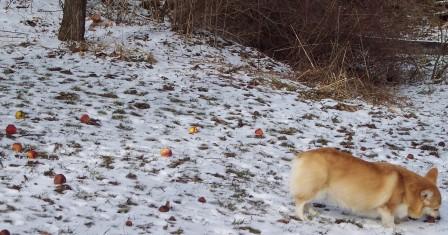Some years ago, a Corgi rescue organization asked permission to reprint a post I wrote for a Yahoo forum on their website.
They folded my post into an article they published for people who wonder if Corgis are a good breed for families with children.
Every once in awhile I get emails from people who have read the article. Unfortunately, most of them come from people who have realized, too late, that they have a heart-breaking problem on their hands.
I got one of those this weekend. Woman’s Corgi bit her three-year-old daughter on the face. The plastic surgeon is hopeful that the scars won’t be too bad.
These emails share something else in common: between the lines, what people want is for me to show them how to make it better.
Unfortunately, there is no way to make it better.
Once a dog has snapped at someone, let alone bitten, your options are very limited. If you’ve purchased the dog from a “reputable breeder,” you can probably ship the dog back. You’ll be out whatever you paid for the dog, but at least the problem is no longer yours.
If you got the dog from a “backyard breeder” (someone you found in the classifieds, for example) or a pet shop, or a neighbor whose dog had puppies, things are much more grim.
You can try to find a behaviorist who can help you learn to modify the behavior. Unfortunately, that’s no panacea. If you happen to choose a lousy behaviorist, you may end up with a dog that is more aggressive and less predictable than before.
Behaviorists cost money.
Behaviorists also don’t actually “fix” a dog. They help you learn how to modify a dog’s behavior. You are going to have to do a lot of work. It’s going to take time, consistency, and focus.
And no matter how much work you do, you can’t erase the fact that your dog has bitten. You can’t ever leave your dog unsupervised around children, for example.
So you’ll end up sinking money and time into a situation that, at best, is somewhat manageable.
Oh, and by the way, you may be in for another expensive surprise when it’s time for you to renew your homeowner’s insurance policy.
Hopefully you’ve got the cash on hand to self-insure.
Your only other option, sadly, is to have the dog put to sleep. Rescue organizations won’t take dogs that have bitten (they are glutted with dogs that haven’t bitten — and taking a dog that has bitten opens them to liabilities, should the dog bite again).
Unfortunately, people really really don’t want to hear this. When I wrote to the woman who last emailed me, I got an angry email back, accusing me of being cruel.
Cruel?
Give me a break. Cruel would have been to tell her she’s an idiot for not getting her dog neutered, for failing to train the dog properly in the first place, for allowing a dog that had begun to snap anywhere near her children.
Cruel would be asking her what kind of a mother would keep a dog in her home after it had bitten her daughter’s face.
Cruel, yeah, I could have been cruel. But I wasn’t.
Here’s how she closed her email to me:
I would hate to hear your response to someone you knew and really cared for.
Now, that is cruel.


